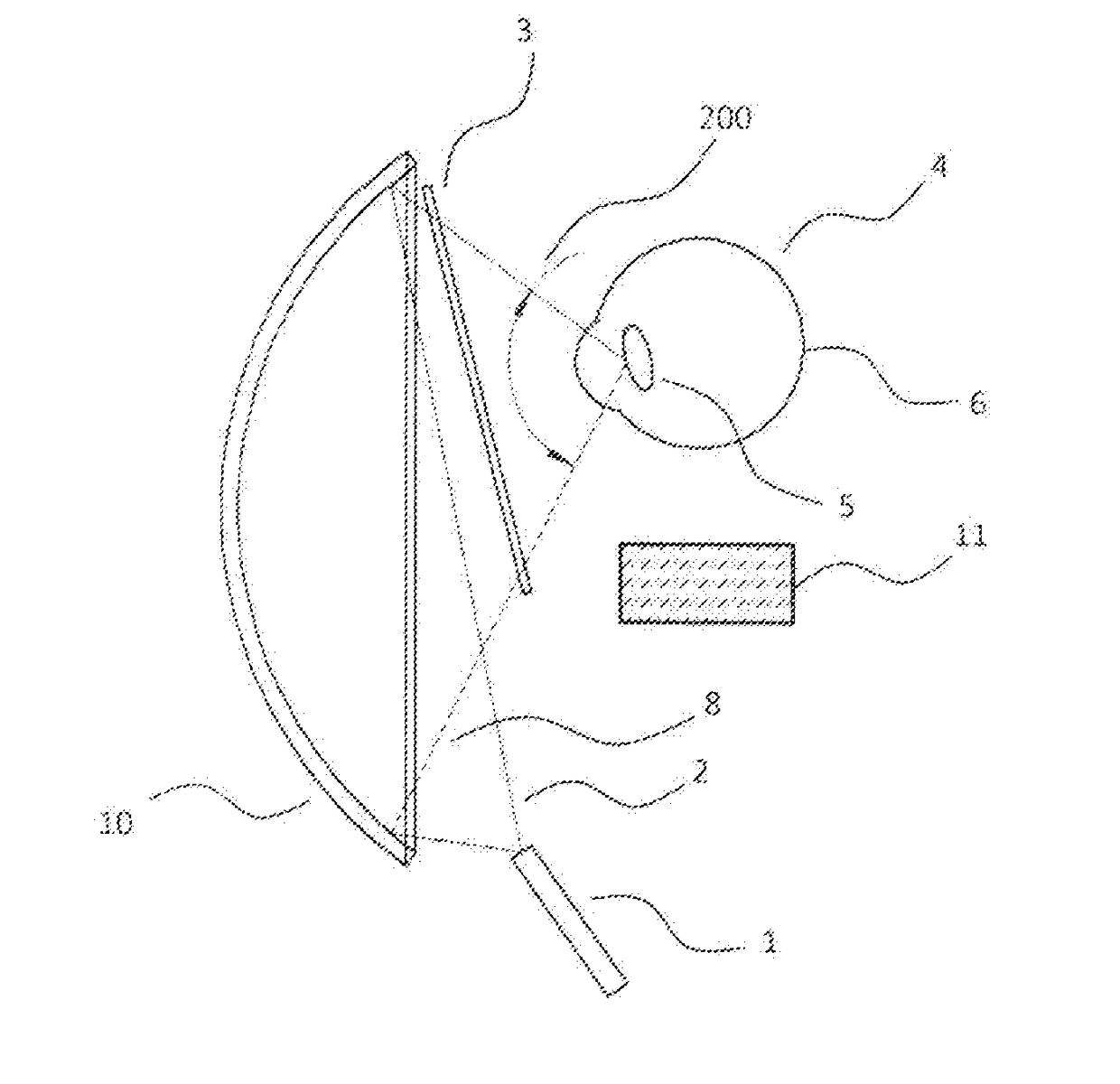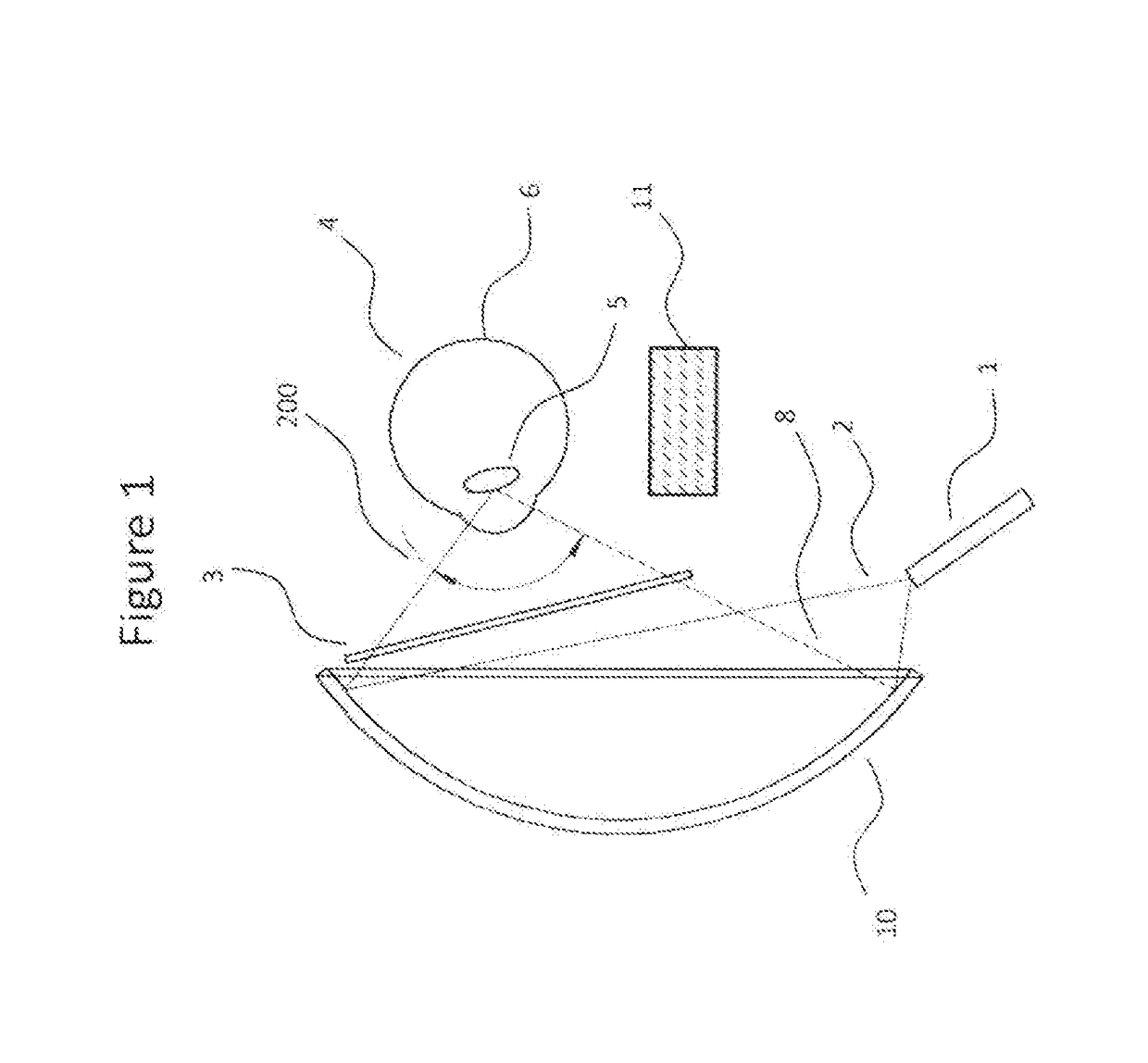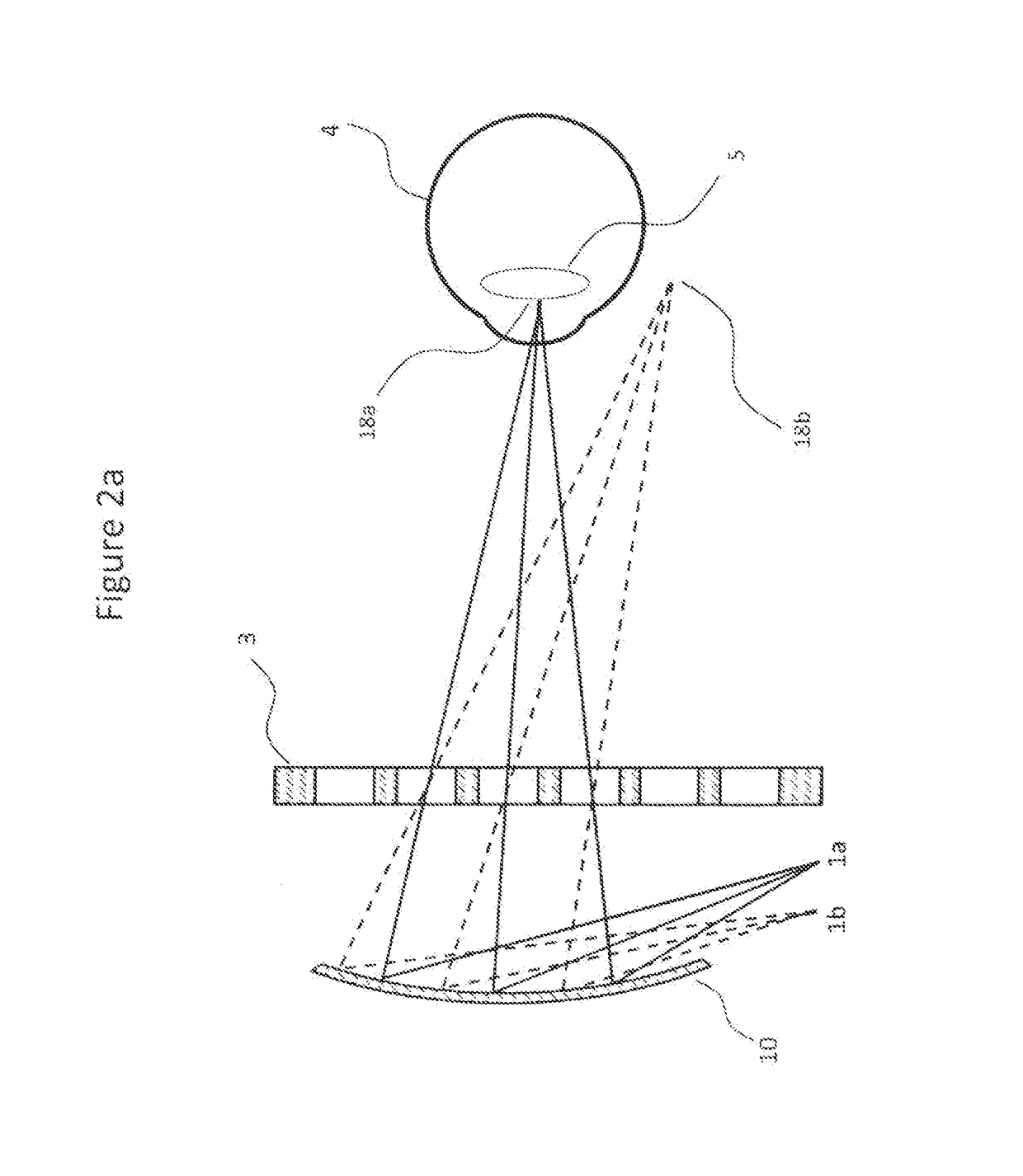Head mounted display with directional panel illumination unit
- Summary
- Abstract
- Description
- Claims
- Application Information
AI Technical Summary
Benefits of technology
Problems solved by technology
Method used
Image
Examples
1st embodiment
1st Embodiment
[0083]The first embodiment of this invention is shown in FIGS. 1-3. In exemplary embodiments, a head mounted display device includes a switchable light source that is switched to emit light for generating at least one viewing zone, and a panel illumination unit that is illuminated by the light source. The device further includes an image panel, wherein the panel illumination unit converges the light onto the image panel and the image panel selectively transmits light at different pixels to generate image content. An eye monitor measures information pertaining to an eye configuration of a user wearing the wearable device, wherein the image content is visible to the user when the eye is aligned with respect to the viewing zone. The panel illumination unit converges the light such that light emitted by the image panel converges into the viewing zone positioned based on the eye configuration information measured by the eye monitor.
[0084]FIG. 1 shows the principal optical e...
2nd embodiment
2nd Embodiment
[0095]The second embodiment is shown in FIG. 4, in which a curved image panel 20 is used. The image panel surface could be normal to the converging light. Since liquid crystal technologies often suffer from performance issues when light is incident at a large angle from the panel's surface normal, this configuration would offer advantages in providing better image quality compared to a flat panel.
3rd embodiment
3rd Embodiment
[0096]FIGS. 5a-5b show the third embodiment in which an image panel 31 includes a layer of lens array 32 including a plurality of lenslets located adjacent to the pixel panel, for improved collimation of light emerging from each pixel to limit divergence to further permit close positioning of the image panel relative to the eye. In this embodiment, the pixels 7 (FIG. 5b) in the image panel may have a fill ratio / aperture smaller than regular LCD panels such that light emerging from each pixel may have a high spatial coherence. A micro-lens with size larger than the pixel aperture is positioned closely after each pixel such that light can have an emerging beam with improved collimation. The ratio of the number of micro-lens lenslets to the number of pixels is could be 1:1 (each color pixel has its own private microlens), 1:3 (e.g. red, green, and blue pixel sharing one micro-lens), or other ratios not too large such that the display could remain a high effective resoluti...
PUM
 Login to View More
Login to View More Abstract
Description
Claims
Application Information
 Login to View More
Login to View More - R&D
- Intellectual Property
- Life Sciences
- Materials
- Tech Scout
- Unparalleled Data Quality
- Higher Quality Content
- 60% Fewer Hallucinations
Browse by: Latest US Patents, China's latest patents, Technical Efficacy Thesaurus, Application Domain, Technology Topic, Popular Technical Reports.
© 2025 PatSnap. All rights reserved.Legal|Privacy policy|Modern Slavery Act Transparency Statement|Sitemap|About US| Contact US: help@patsnap.com



